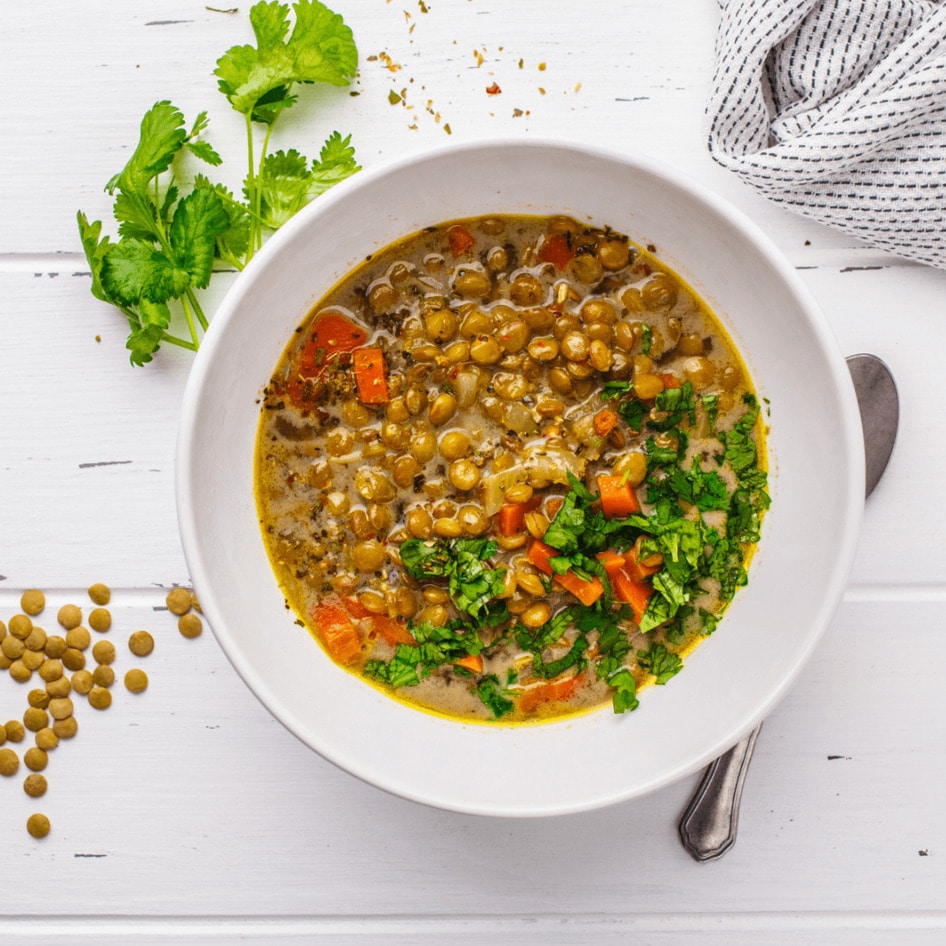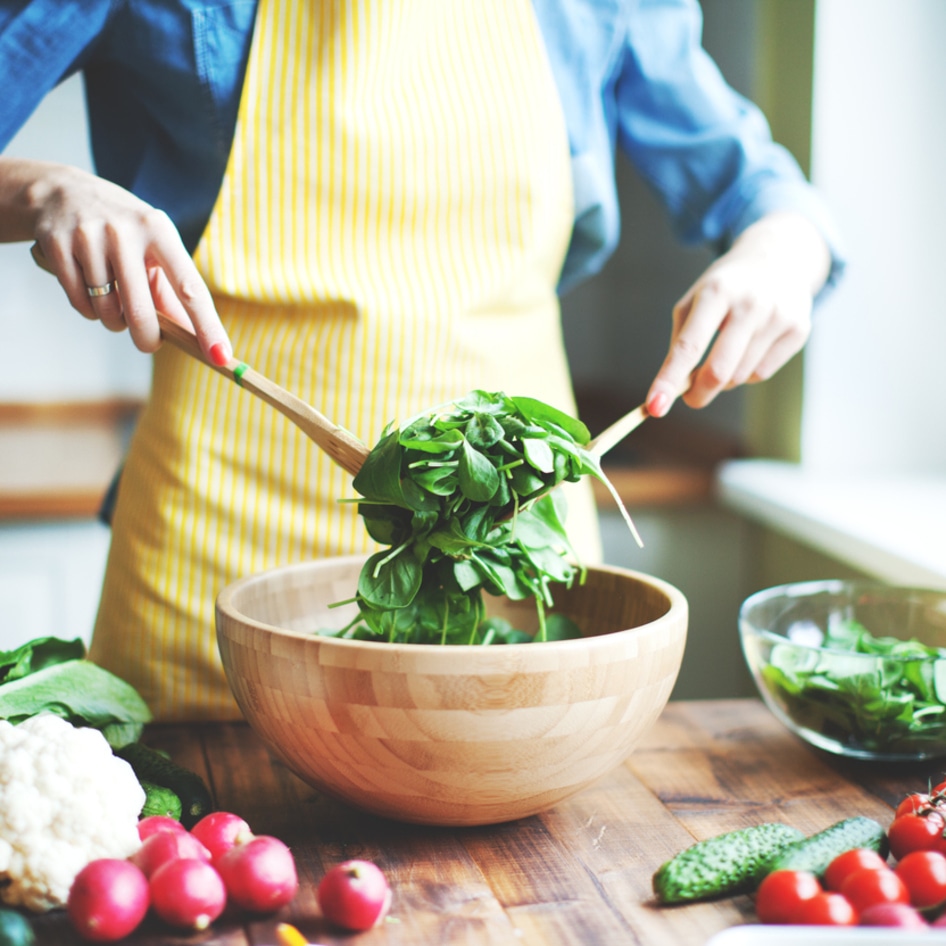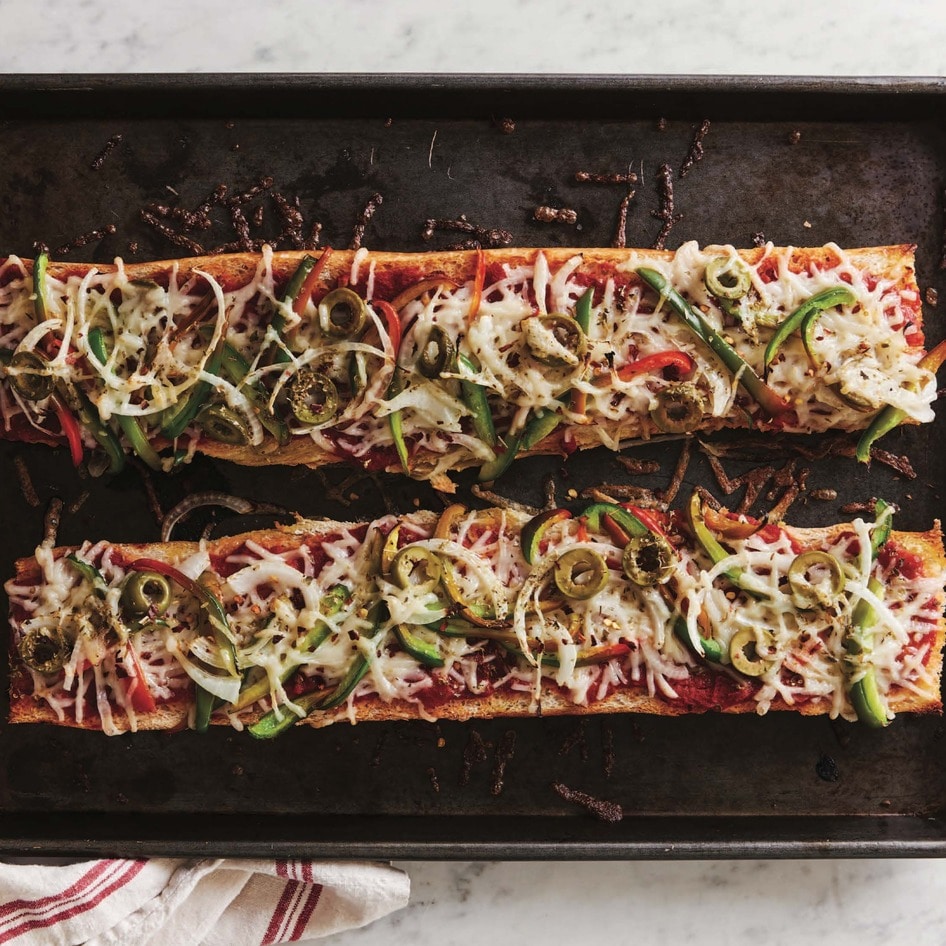Switching to a plant-based diet is often associated with improved health, environmental benefits, and ethical eating. But one common concern remains: is it affordable? While it’s true that some plant-based products, like vegan meat and specialty items, can sometimes be expensive, the core staples of a plant-based diet—grains, beans, vegetables, and fruits—are often some of the most budget-friendly foods available. The key lies in how you shop, plan, and prepare your meals.
With a little strategy, eating plant-based can actually lower your grocery bill and reduce food waste. From buying in bulk to embracing seasonal produce, there are smart ways to stretch your dollar while still enjoying a variety of flavorful, nutrient-rich meals.
How vegans can save money at the grocery store
It’s important to remember that a whole-food, plant-based diet focused on simple, minimally processed ingredients can still be one of the most cost-effective ways to eat. Let’s dive into how to save money on a plant-based diet.
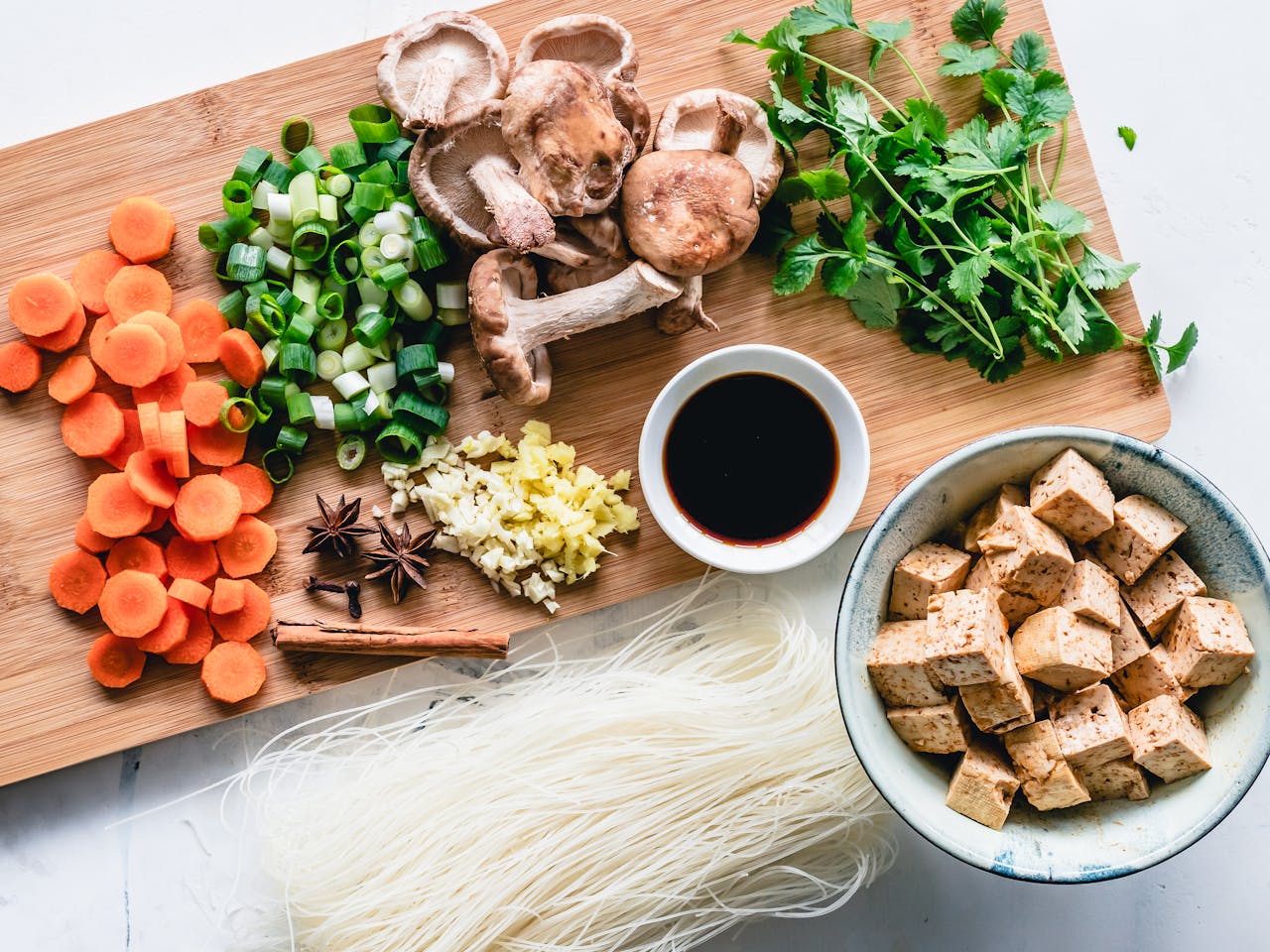
1 Focus on whole foods
Highly processed vegan products, while convenient, are often not budget-friendly. A single package of vegan cheese or plant-based burgers can cost two to three times more than a block of tofu or a bag of lentils. Shifting your grocery list toward whole foods can significantly reduce your weekly food costs. These foods are also more filling, nutritious, and versatile.
According to Terri Chrisman, a board-certified nutritionist with the American College of Lifestyle Medicine and the author of Fabulous Health, the best whole foods that are both versatile and affordable are:
-
Wholegrain oats: “Most people think oats are only for breakfast, but you can use them in any meal. Blend oats to make oat flour and use it in pancakes, muffins, and cookies. Mix oats, veggies, and spices for a delicious savory baked oatmeal,” Chrisman says.
-
Tofu: “Use it as you would any other protein in curry, stir fry, soup, or stew. Blend it in a smoothie for an added burst of creaminess and protein. Make ricotta, béchamel, and other soft cheeses. Use it as a base for cheesecake and chocolate mousse. Air fry it to make tofu fries,” Chrisman advises.
-
Dried legumes: “Based on the prices in my supermarket, dried beans are up to 75 percent cheaper than canned beans. I add beans to everything—including my cookies,” Chrisman says.
-
Bananas: “Bananas are one of the cheapest fruits. Eat them fresh or slice them and dehydrate into banana chips. They are healthier than oil-fried potato chips, but just as tasty. Let your bananas ripen on the counter then freeze them. Frozen bananas make awesome nice cream and fabulous smoothies, and can be used as sugar and egg substitutes in baked items,” Chrisman notes.
-
Canned tomatoes/passata: “Canned tomatoes or passata can be as cheap as a dollar a can when fresh tomatoes can cost four times that much. Use canned tomatoes and passata in spaghetti sauce, chili, minestrone and curry,” Chrisman says.

2 Buy in bulk
Bulk bins are a vegan’s best friend. Purchasing items like oats, rice, beans, lentils, nuts, seeds, and spices in bulk can save you a considerable amount over time. Many health food stores and even mainstream supermarkets offer bulk sections.
“Grains, nuts, oatmeal, beans, and other dried goods are best purchased from the bulk bins because they are usually substantially cheaper than the same items that are canned or prepackaged,” Chrisman explains. “The added bonus is you can purchase as much or as little as you like. Why buy a large bag of something new if you just want to try it out? Sometimes stores sell bulk spices at a fraction of the cost of the ones in the spice rack. Just remember to keep your original jar to refill.”
Additionally, buying larger quantities (such as a 10-pound bag of rice instead of a two-pound bag) is usually cheaper per unit. “Personally, I’m a huge Costco person and I buy my olive oil, oats, quinoa, pasta sauce, [and more] all in bulk,” adds Los Angeles-based holistic nutritionist Dave Coast.
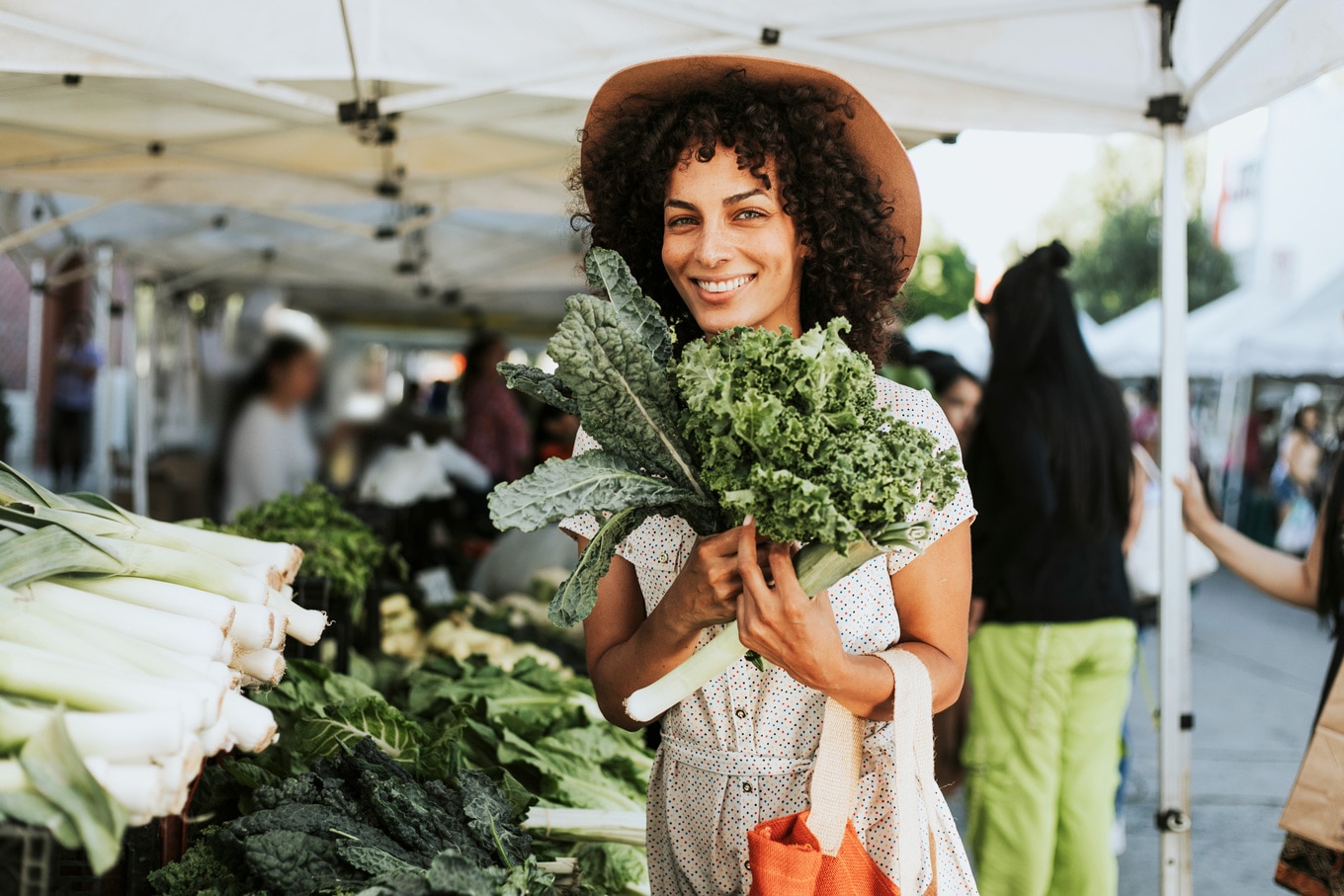
3 Embrace seasonal and local produce
Fresh fruits and vegetables can be pricey, especially when they’re out of season or imported. One of the best ways to save is by shopping for produce that’s in season locally. Not only is it cheaper, but it’s also fresher and more flavorful.
“When it’s cherry season or peach season, go crazy and take advantage of the cheaper prices. Any extra food that you can’t eat immediately can be frozen, dehydrated, or canned for later,” Chrisman says.
You can find out what’s in season in your region with a quick online search or by visiting your local farmers market. Farmers markets often offer competitive prices, especially towards the end of the day when vendors are looking to offload remaining inventory.
“Get your leafy greens at the farmers market,” Coast suggests. “Most packaged goods at a farmers market are more expensive than your grocery store, but leafy greens are almost always cheaper.”
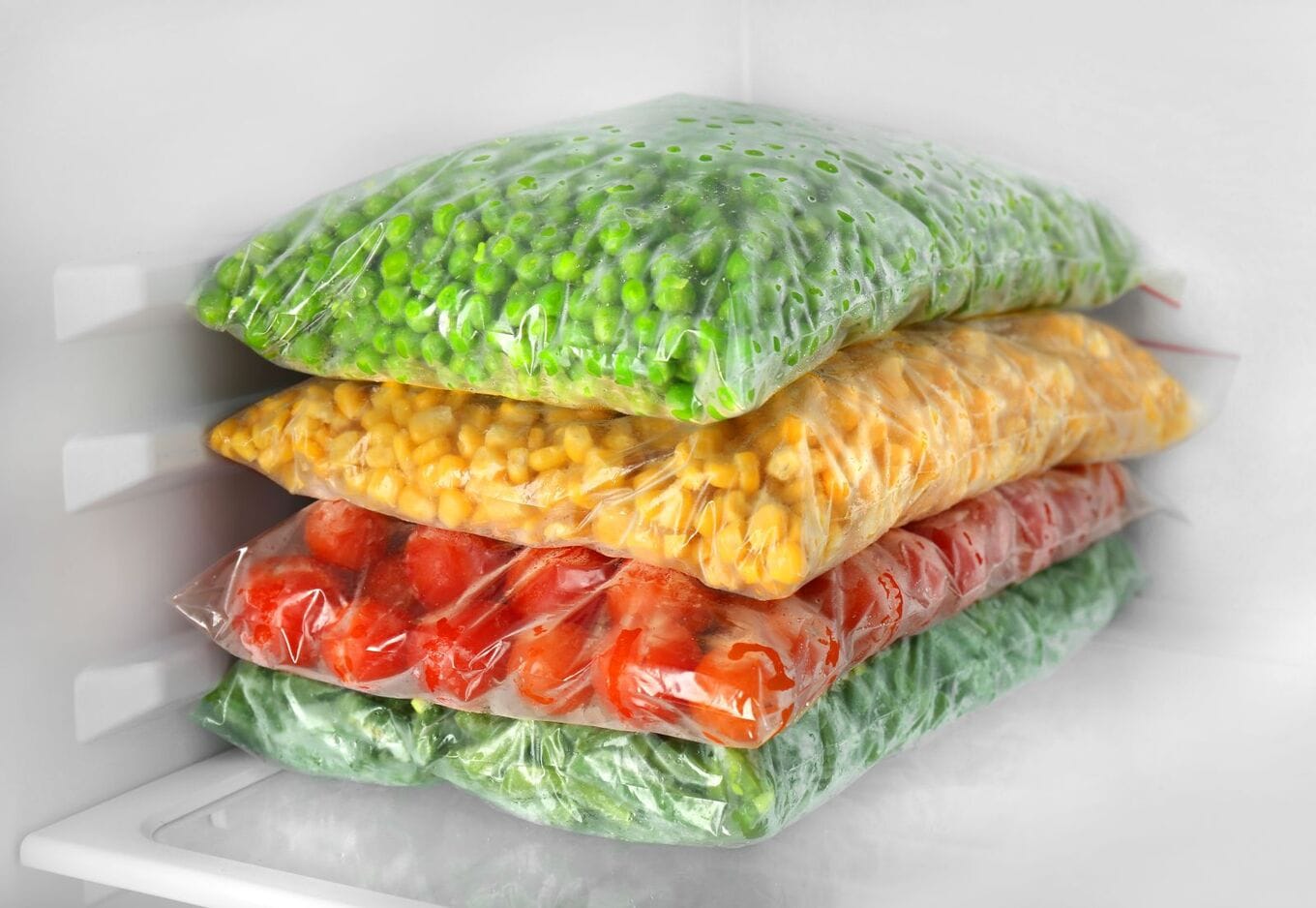
4 Buy frozen
Buying frozen fruits and vegetables is a smart way to save money on a plant-based diet. Frozen produce is often less expensive than fresh, especially when certain items are out of season. It also lasts much longer, reducing food waste and the need for frequent grocery trips. Since frozen fruits and veggies are typically picked and frozen at peak ripeness, they retain their nutrients and flavor, making them a budget-friendly and convenient choice for healthy meals.
“Frozen vegetables and fruit are picked at peak ripeness and immediately flash frozen. So they retain all their nutrition and can often be cheaper than their fresh counterparts. This is especially true for berries, which can be cost-prohibitive when out of season,” Chrisman says.

5Meal plan and cook at home
Meal planning is one of the most effective ways to reduce waste and control spending. Start each week by planning out your meals, using what you already have in your pantry and freezer. Make a grocery list based on what you need, and stick to it. A big pot of lentil soup, a tray of roasted vegetables, or a batch of chickpea curry can feed you for several meals at a fraction of the cost of store-bought options.
Stock up on ingredients that are versatile for creating multiple budget-friendly meals, “anything that is a blank canvas and can be flavored, cooked, [or] manipulated in any way you like,” says Priyanka Naik, award-winning chef, Food Network champion, TV host, and author of The Modern Tiffin. “For me, that’s tofu; chickpea flour; beans of any variety; grains and carbs like rice, noodles, pasta; and starchy ingredients like potato. Any of these ingredients can be cooked with various spices to make any cuisine, and they can be cooked in any way: sautéed, baked, fried, air fried, etc.,” Naik continues.
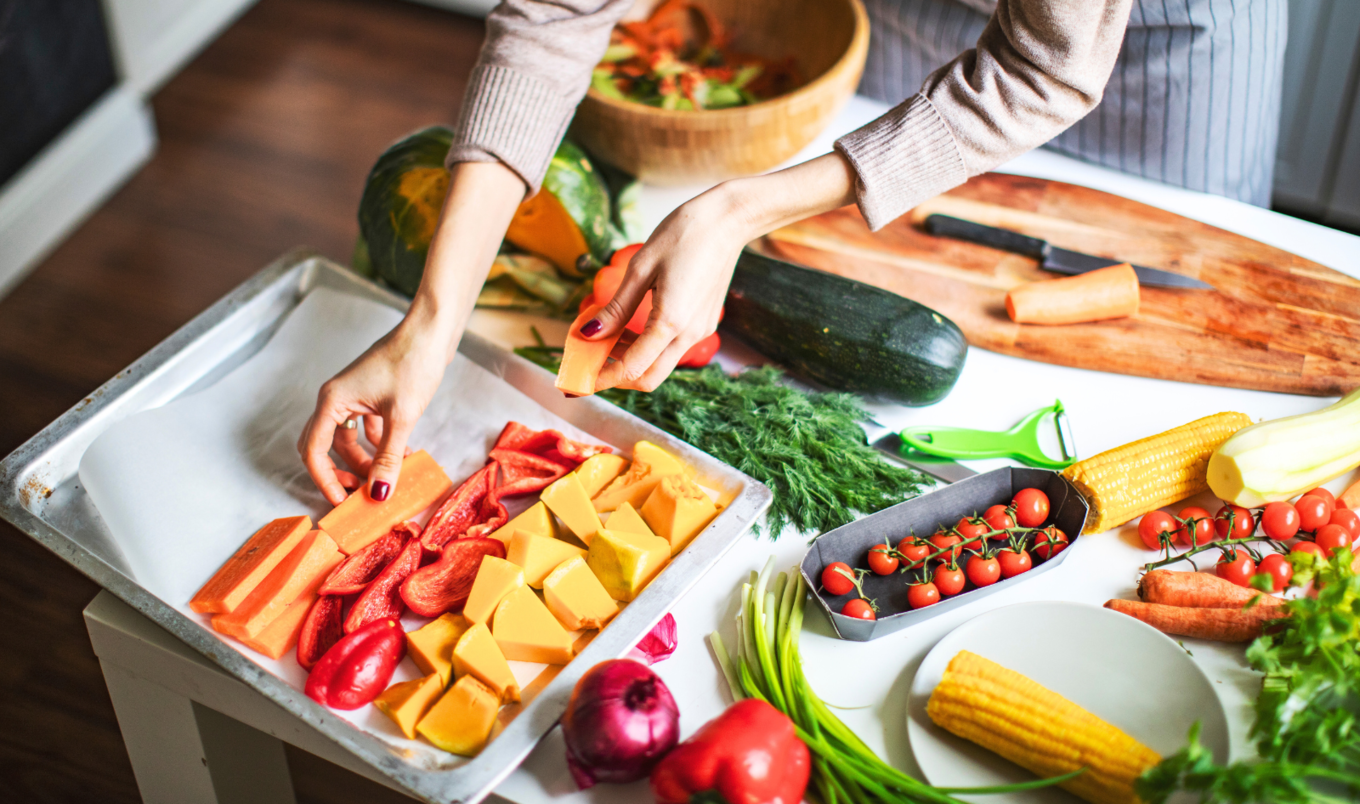
6Minimize wasted food
Americans waste an estimated 30 to 40 percent of their food supply, and that wasted food equals wasted money. To cut down on waste, try storing fresh produce properly to extend its life, using scraps (like broccoli stems or carrot tops) in soups and stir-fries, and freezing leftovers or excess produce before it spoils.
You can also reduce waste by preparing staples you know you’re going to use—and that you can use in various ways. “I meal prep a leafy green, starch, beans and rice, or quinoa every week,” Coast explains. “The variety of ways I can include these staples into pretty much every meal, without getting sick of them, is enormous. Feeling like a taco bowl night? You know a bunch of your staples are already done and ready to go, and now you just need tortillas, salsa, and other things. It makes cooking feel much less overwhelming while knowing your bases are covered.”
You can also incorporate “clean out the fridge” meals into your week to use up odds and ends.
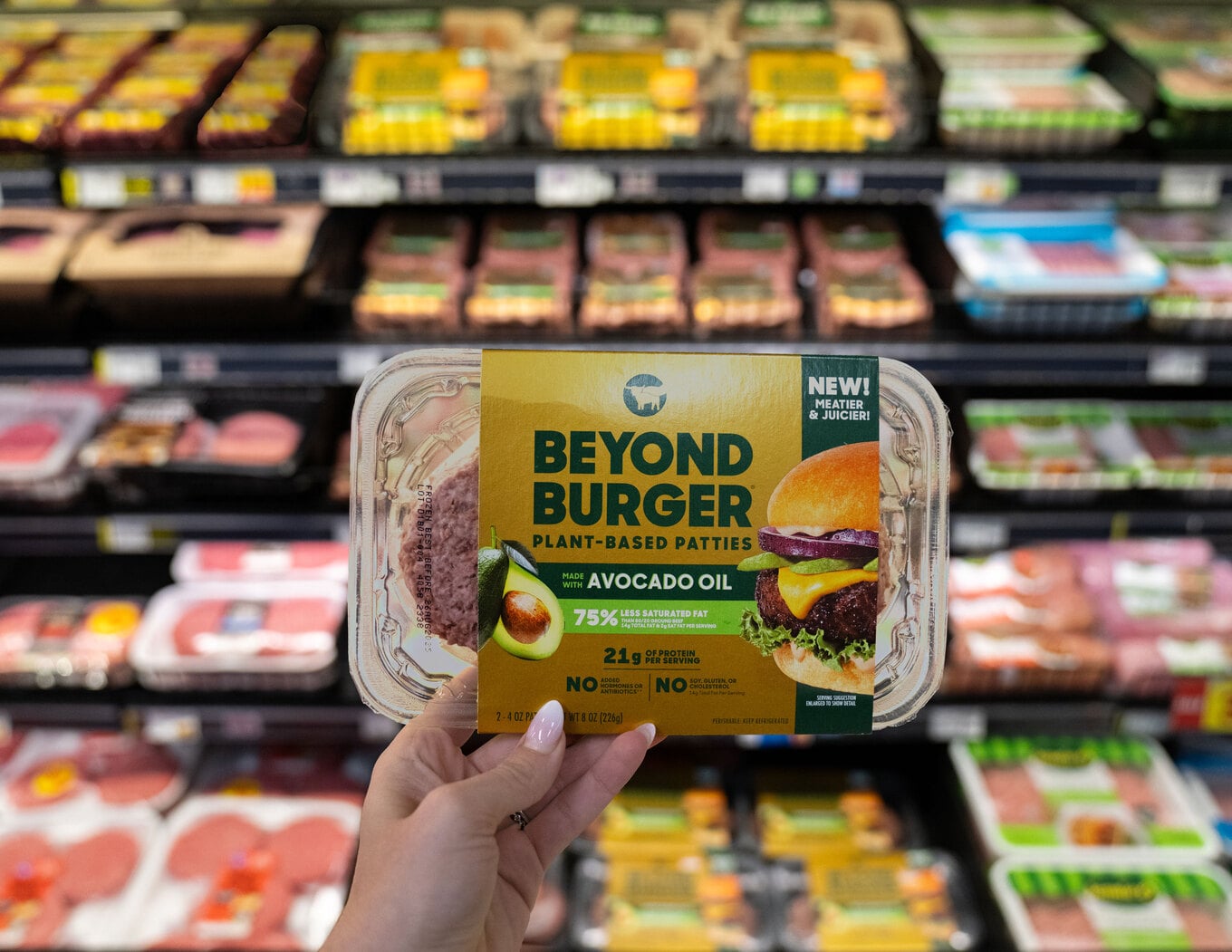
7 Skip the fancy vegan brands
It’s tempting to try the newest vegan cheeses, plant-based jerky, or coconut milk ice cream, but these specialty items are often luxury products in disguise. While it’s fine to enjoy these occasionally, relying on them regularly can quickly drain your grocery budget.
“Make sure the majority of your groceries come from the outside perimeter of the grocery store and leave room in your cart for one or two new items from the vegan specialty aisle,” Coast suggests. “It allows some room for experimentation and curiosity while ensuring your basics are covered.”
Chrisman also suggests making some of these items at home. Homemade hummus, cashew cheese, or plant-based burgers are surprisingly easy to make—and often taste better and cost less than their store-bought counterparts. “With a little research, you can find recipes online to make your own whole-food versions at home. Not only will they be cheaper, they will most likely be healthier,” Chrisman says.

8 Buy store brands
Many grocery stores offer their own versions of staples such as canned beans, pasta, rice, plant-based milks, and frozen vegetables—often at a significantly lower price. These products are usually made with the same ingredients and meet similar quality standards, but without the added cost of branding and marketing. Over time, opting for store brands can lead to big savings without compromising on nutrition or taste.
“Store brands have gotten a lot better over the years,” Coast says. “For example, Kirkland by Costco, is often better than the big-name brands in the same category. Don’t write them off, especially for staples like rice, oats, almonds, etc.”
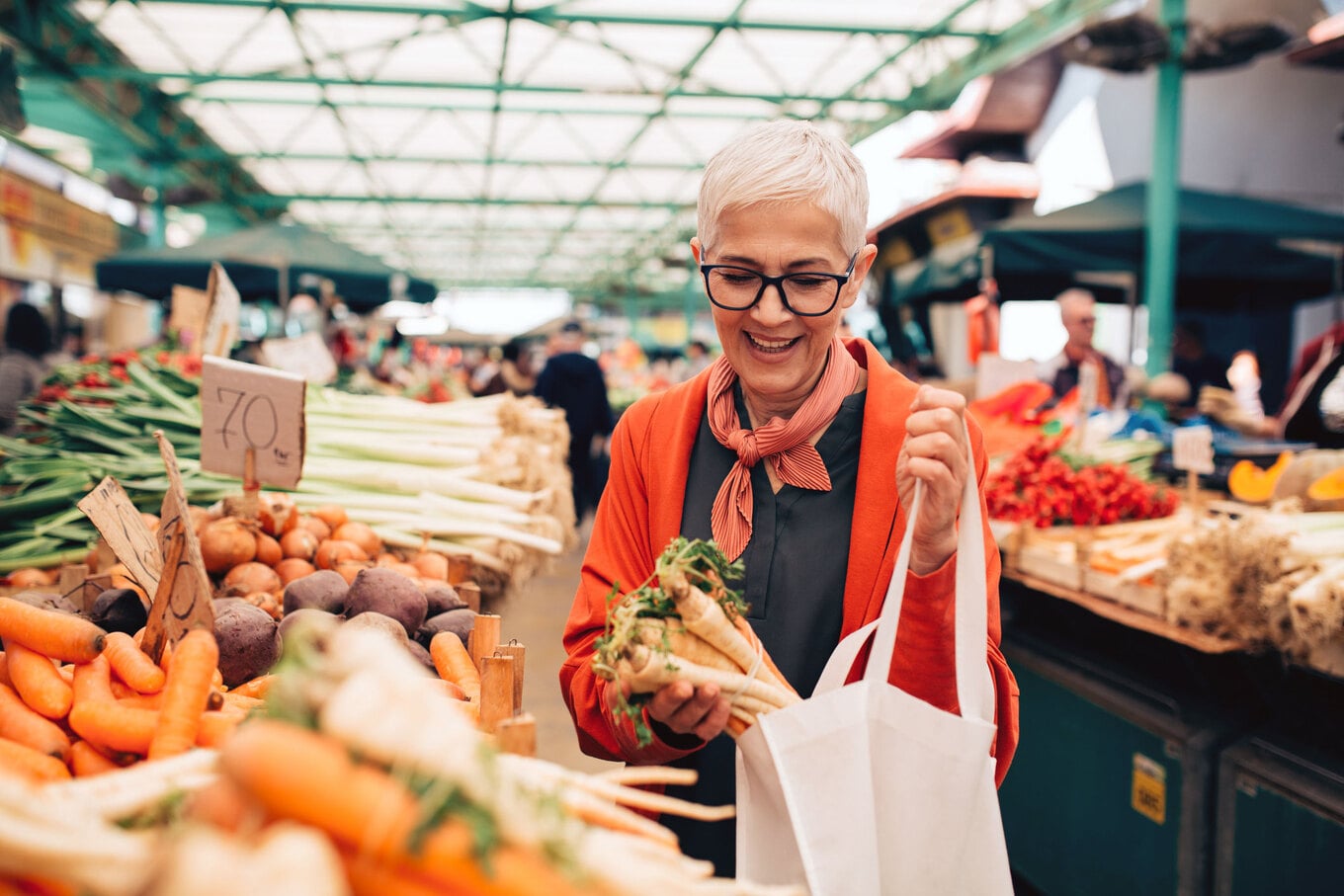
9 Shop at ethnic markets
International grocery stores—such as Indian, Asian, or Latin markets—are often hidden gems for affordable vegan staples. You can often find rice, tofu, spices, canned beans, and produce for much less than at mainstream supermarkets. These markets are also great places to explore new ingredients and expand your plant-based cooking repertoire.
“Asian and Indian grocery stores tend to offer a plethora of produce, and for much less cost compared to a mainstream American grocery store,” Naik says. “You can stock up on fresh herbs, tons of produce, and aromatics like cauliflower, potatoes, ginger, garlic, onions, peppers, and chilies for a fraction of the cost. And you can even find some more ‘exotic’ fruits and vegetables like various fruits, gourds, mushrooms, and leafy greens that are not available at mainstream American grocery stores.”
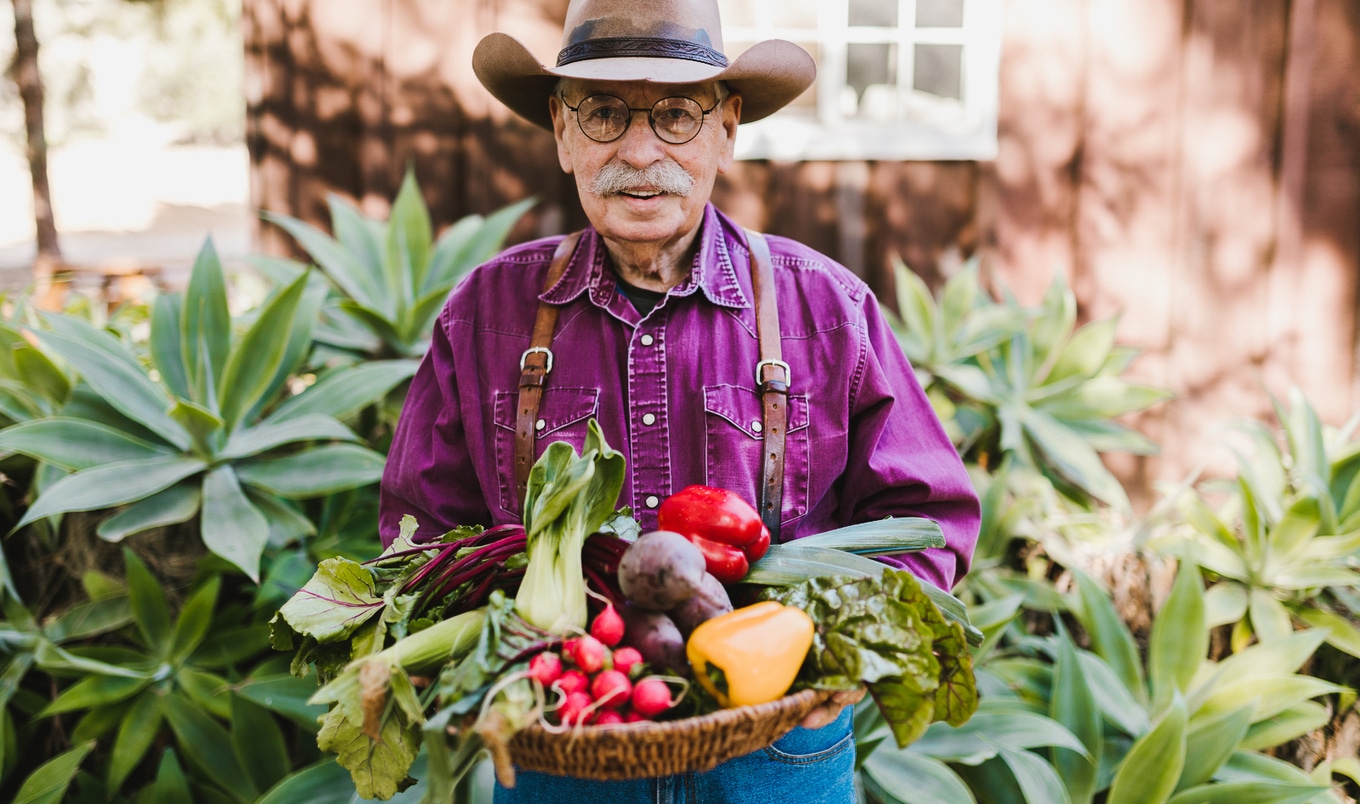
10 Grow your own food
If you have the space, growing a few herbs or vegetables at home can cut costs and elevate your meals. Even a windowsill garden with basil, cilantro, or green onions can make a difference. During the summer, growing zucchini, tomatoes, or leafy greens can significantly supplement your grocery haul.
“There are many at-home micro gardens you can grow. I live in Manhattan, NY, so I don’t necessarily have the space for it, which poses a limitation,” Naik says. “Also, once something grows, it must be eaten. So you may be eating basil every day for two weeks as it grows in abundance. It’s just something to be mindful of if you decide to grow an at-home herb garden, lettuce garden, or anything within that realm.”
While rising food prices are a reality for everyone, vegans have many tools at their disposal to keep costs down. By focusing on whole foods, cooking at home, shopping strategically, and reducing food waste, it’s entirely possible to eat a nutritious, satisfying, and affordable vegan diet.
For more plant-based stories like this, read:
JUMP TO ... Latest News | Recipes | Guides | Health | Subscribe




